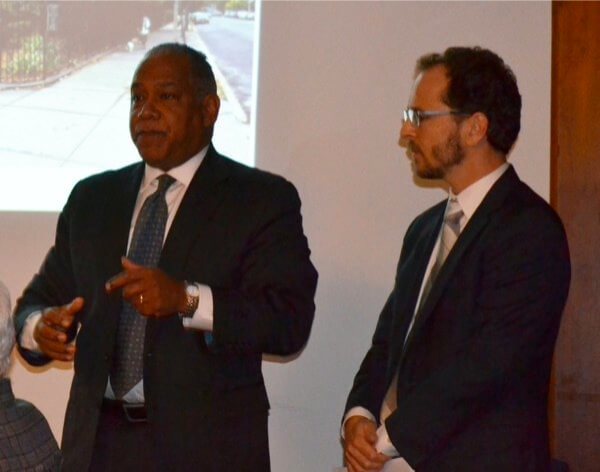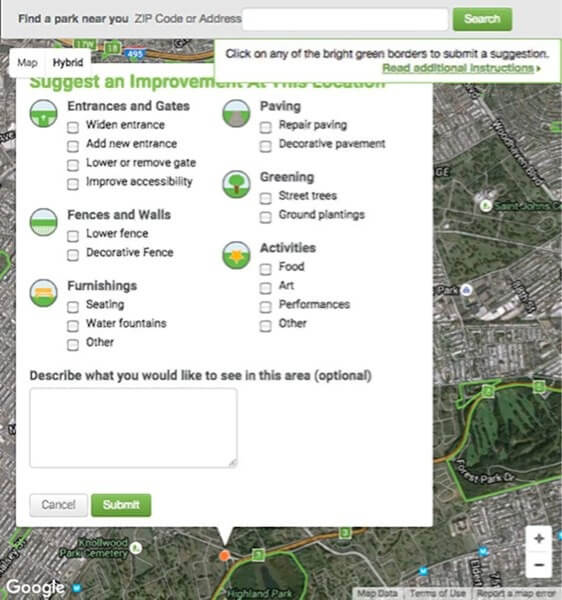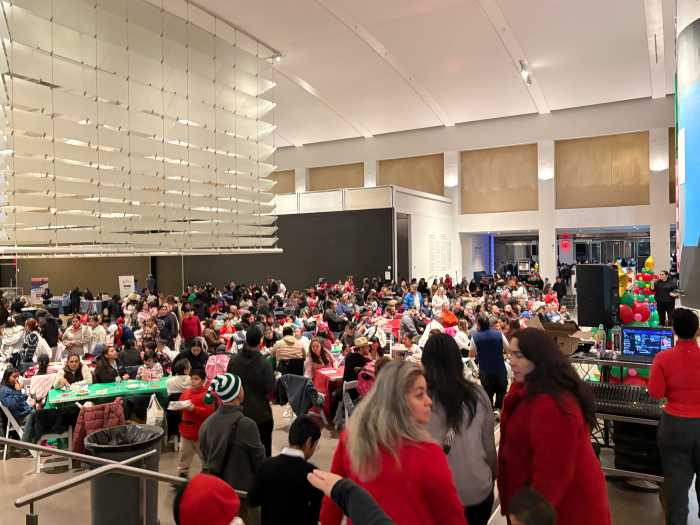By Tom Momberg
The city Department of Parks and Recreation is asking residents to help it find ways to improve parks throughout the city by making suggestions about how some of the $50 million from Mayor Bill de Blasio’s OneNYC plan should be allocated.
Parks Commissioner Mitchell Silver presented the Parks Without Borders initiative to Borough President Melinda Katz and the Queens Borough Board Monday, hoping community board leaders would encourage their neighborhoods to take part.
The department launched a web page in mid-November where people can make suggestions on a map. The page, www.nycgo
“This is the first time we have asked New Yorkers throughout the city where they think we should be making park improvements,” Parks Deputy Director of Planning Steve Leonard said. “Not only can you suggest individual parks, but you can zoom in on the park and tell us exactly what you want, exactly where you want it.”
The initiative specifically aims to improve accessibility and visibility in parks throughout the city to make them more inviting and to encourage more use and stronger care for the urban greenspaces.
About $40 million of the initiative’s funds have been allocated for new improvement projects at eight existing parks. Silver guaranteed each borough at least one project.
Once the projects are selected based on community input, the department said it would adhere to the typical capital design process, which requires community board input.
As Silver stressed the importance of lowering fences and shrubs to open up and connect parks with neighborhoods to serve as centers of communities, borough board members had concerns for the potential impact on crime, particularly in larger parks where visibility is limited.
“We’ve been asking for additional park enforcement officers and a mounted unit to cover Highland Park and Forest Park,” Community Board 5 Chairman Vincent Arcuri said. “We’ve spent tons of money on the (Ridgewood) Reservoir, which is not really accessible. We need our parks to be accessible, but we also need security.”
Silver said each project would deal with specific concerns, working with the community before considering keeping gates unlocked and removing fences.
“This is voluntary,” Silver said. “If people have discomfort about the program to either lower, eliminate or open up (fences) and the edges (of parks), we have thousands of choices and if there isn’t a level of public support, we will not proceed.”
Besides the fund for the eight new projects, the other $10 million is supposed to be dispersed to more than 30 current capital improvement projects the department is already working on.
Those current projects have already been funded, but in addition to what those site plans already call for, entrances could be improved or added, while adjacent spaces and edges of the parks could be more visible, lush and inviting with money from the Parks Without Borders fund, he said.
Silver said the suggestions the department gets from the public will also be considered for those existing projects.
While opening up those parks might appeal to both law-abiding citizens and criminals, the commissioner said the initiative is more about making the best use of park space, removing dead space and making it more accessible—trying the strategy out in just a few parks to start with.
“In terms of safety, there is something called crime prevention through environmental design. We’ve met with the NYPD—what helps the park is better visibility and more eyes from the street—good uses pushing out bad uses,” Silver said.
Reach reporter Tom Momberg by e-mail at tmomb



































